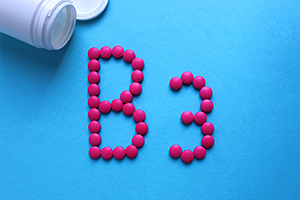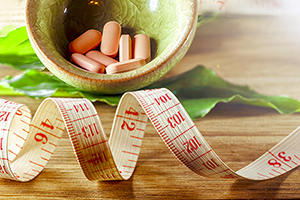



| By Dr. Ronald Hoffman
Summer is here, and that means warm, lazy days at the beach, in the park, or on the patio. After a bitter, interminable winter, many of us are facing the onslaught of UV rays without a basecoat of skin pigment, rendering us more susceptible to solar damage and skin cancer risk.
 Notwithstanding the benefits of endogenous vitamin D production with sun exposure, there are real risks from excessive UV rays—skin cancer of course, but also degradation of superficial collagen which leads to prematurely wrinkled, leathery skin (think Tan Mom!).
Notwithstanding the benefits of endogenous vitamin D production with sun exposure, there are real risks from excessive UV rays—skin cancer of course, but also degradation of superficial collagen which leads to prematurely wrinkled, leathery skin (think Tan Mom!).
Dermatologists are on a virtual Jihad to limit sun exposure (which would stoke our current epidemic of D deficiency!); a plethora of sunscreens promise limited protection, but sometimes with the risk of exposure to toxic chemicals. I’m particularly concerned with spray-on sunscreen products that expose us to the danger of inhaled nanoparticles. Environmental Working Group (EWG) does a good job highlighting these hazards.
This article is intended not as a review of sunscreens, but of the emerging science of nutraceutical skin protectants. While not a substitute for prudent sun exposure, they offer a second line of defense against skin cancer and solar aging.
Heliocare: Plants, too, must protect themselves from the devastating effects of chronic UV exposure, so it stands to reason they contain powerful natural antioxidants that quench free radicals. This is the rationale behind a new over-the-counter product called Heliocare, developed by skin scientists. It is made from the extract of Polypodium leucotomos (PLE), a fern native to Central and South America that has been used for centuries as a remedy for skin related conditions.
Niacinamide (Vitamin B3): Australia is a proving ground of sorts for skin cancer research because of its preponderance of Anglo-Saxon individuals inhabiting a sub-tropical continent. Skin cancer has reached epidemic proportions down under, so researchers at the University of Sydney sought to demonstrate whether daily doses of niacinamide could shield Aussies from skin cancer risk.
The study involved 386 people who had had at least two skin cancers within the last five years. They were told to take niacinamide 500 mg twice daily for one year and the results were compared to a placebo group. There was a 23 percent reduction in skin cancers in the niacinamide group.
In addition, there was a reduction in those crusty, scaly “pre-cancers” called actinic keratoses by 11 percent after just 3 months of use, and by 20 percent after 9 months of use.
These results were applicable to basal cell and squamous cell skin cancers alike (by far the preponderant skin cancers) but not more deadly melanoma. Interestingly, once the study was over and subjects stopped taking niacinamide, their skin cancer rate quickly reverted to normal.
While niacinamide is not typically considered an antioxidant, it plays a role in stabilizing DNA replication. Coding mistakes in sun-zapped genetic material result in mutations in cell lines that can lead to skin cancer.
While perhaps not for everyone, high-dose B3 might prove helpful for individuals who require frequent “barnacle scrapings” at the dermatologist.
For those undertaking this protocol, be careful not to confuse the niacinamide form of B3 with niacin B3, which can cause unpleasant flushing and even liver damage in some people who take high doses unsupervised.
Astaxanthin: Among the most potent of the carotenoid antioxidants, astaxanthin has been heralded as an “internal sunscreen.” When taken in sufficient amounts, it literally increases skin pigmentation, offering a natural sunshield, albeit producing a slightly orange coloration. Naturally found in shrimp, salmon and krill, studies have suggested it reduces sun-induced skin damage. Other research demonstrates that it reduces skin wrinkling and minimizes loss of skin elasticity.
Lycopene: Another member of the carotenoid family, tomatoes and watermelon are rich natural sources of this potent antioxidant. Research demonstrates that simply eating tomato paste daily for ten weeks reduced sunburn by a whopping 40%!
Vitamin E: Since vitamin E is a potent antioxidant, it makes sense to consider it as part of your skin-shield portfolio. A study performed in 2000 showed that vitamin E could prevent solar damage, with additional benefits when teamed with beta carotene. But a subsequent study evaluating the effects of consumption of 400 IU daily of alpha tocopherol revealed no sun-protective effects. Perhaps the benefits of vitamin E might have been more robustly demonstrated had the researchers used the broad spectrum, mixed tocopherol form of vitamin E, rich in the gamma-tocopherol fraction. On the other hand, topical application of vitamin E and vitamin C has been demonstrated to slightly retard sunburn, hence their inclusion in many sunscreen products.
Vitamin D: After one’s first brush with skin cancer, the frequently heard admonition is “Avoid sun exposure.” This may paradoxically compound the risk of subsequent skin cancers. Vitamin D is a potent inhibitor of cancer, and researchers are now trying to “tweak” its chemical structure to devise anti-skin cancer drugs. Maintenance of adequate vitamin D is even thought to play a role in melanoma prevention.
EGCG: Epigallocatechin gallate (EGCG) from green tea has been shown to have generalized anti-cancer effects. Clinical trials are underway to establish whether topical application of EGCG can retard the progression of basal cell skin cancer; it’s unclear whether taking it orally has the same effect. Anecdotally, I can share that ever since I’ve been taking EGCG, one 500 mg capsule twice daily, I no longer suffer the painful aftermath of overzealous sun exposure.
Curcumin: With its well-documented anti-inflammatory and anti-cancer effects, curcumin, a purified derivative of turmeric, is a promising nutraceutical for solar protection. Test-tube experiments show that it can halt replication of melanoma cells; curcumin creams have been touted for reversing skin damage caused by UV exposure as well as for protecting cancer-prone skin.
Pycnogenol: An extract of the bark of the French maritime pine grown in Southern France, a region of blistering sunlight, pycnogenol is rich in anti-oxidant proanthocyanidins. Topical application of pycnogenol after UV exposure significantly decreases the inflammatory response, resulting in less swelling and redness. An experiment by free radical pioneer Lester Packer, Ph.D. showed that when healthy volunteers were dosed with oral pycnogenol prior to sun exposure, it doubled their resistance to skin reddening. Pycnogenol has also has been documented to prevent collagen cross-linking, a hallmark of loss of skin elasticity and wrinkling.
Grapeseed Extract: Sometimes dubbed “the poor man’s pycnogenol,” it stands to reason that grapeseed extract might measure up to pycnogenol due to its rich content of proanthocyanidins. Indeed, a landmark study of hairless mice exposed to UV radiation showed that oral supplementation reduced the incidence and severity of skin cancers.
Sun exposure cannot – and should not, in most cases – be avoided entirely, but the supplements above could prove helpful against the potential dangers of time spent soaking up the rays. I wish all my readers a wonderful, fun- and sun-filled summer, and hope that these recommendations can help make it a safe one for your skin as well.
Though we think of declining estrogen as the hallmark of menopause, it's actually common for…

Up to 12 percent of Americans have ulcers at some point in life. Peptic ulcers…
Gallbladder disease is a modern illness. An estimated 20 million Americans have gallbladder disease. The…

This past week we were regaled with headlines like: High levels of niacin may increase…

March is National Nutrition Month and, needless to say, good nutritious food is essential to…

I recently attended the Integrative Healthcare Symposium (IHS), an annual conference held here in Manhattan. The…

Exploring the Healing Power of Herbs with Dr. Bill Rawls, Part 1

Our virtual voicemail is open 24/7, so there's no need to wait to submit your questions for Dr. Hoffman. Leave a message, and you may hear your question featured on the Intelligent Medicine radio program!